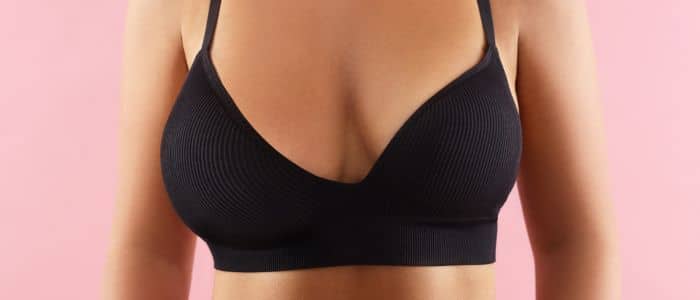
- Exploring Solutions for Breast Asymmetry
- Assessing Your Breast Symmetry
- Treatment Options for Asymmetrical Breasts
- Non-Surgical Approaches
- Surgical Approaches
- Breast Augmentation to Correct Lopsided Breasts
- Download Anca's Breast Augmentation Guide
- Breast Reduction to Fix Asymmetrical Breasts
- Download Anca's Breast Reduction Guide
- Breast Uplift for Lopsided Breasts
- Download Anca's Breast Uplift Guide
- Fat Transfer to the Breasts to Correct Asymmetry
- FAQs about How to Fix Asymmetrical Breasts or Lopsided Breasts – Treatment Options
- Can exercises specifically target and correct breast asymmetry?
- Are there any non-invasive treatments that provide permanent results for breast asymmetry?
- How do I choose between a breast lift and augmentation to correct asymmetry?
- What are the risks associated with surgical treatments for breast asymmetry?
- How long do the results of surgical treatments for breast asymmetry last?
- Further Reading about Breast Augmentation with Consultant Plastic Surgeon Anca Breahna
- Medical References about Asymmetrical Breasts or Lopsided Breasts
Exploring Solutions for Breast Asymmetry
Breast asymmetry is a condition where a person’s breasts differ in size, shape, or position. It’s a common situation, affecting a large number of women at some point in their lives. The differences can range from minor to more noticeable discrepancies, but it’s important to remember that having some degree of variation between breasts is normal.
The reasons behind lopsided breasts can vary. They might be genetic, a result of natural development during puberty, or could develop due to life events such as pregnancy, weight fluctuations, or ageing. In some cases, underlying health conditions might contribute to changes in breast symmetry.
For many, the differences between their breasts might not cause any physical discomfort, but it can lead to feelings of annoyance or frustration when shopping for clothes or lingerie that fits well.
In the following sections, Chester Consultant Plastic Surgeon Anca Breahna will explore various treatment options, both surgical and non-surgical, that can help in managing breast asymmetry. Additionally, we’ll discuss how to assess your own situation and prepare for potential treatments.
Assessing Your Breast Symmetry
For many, differences between breasts might not be immediately noticeable, as variations are a normal part of the human body’s uniqueness. However, if you’ve observed that one breast is significantly larger, shaped differently, or positioned at a different height compared to the other, you might be experiencing breast asymmetry.
To assess your breast symmetry at home, stand in front of a mirror with a straight posture. Observe the size, shape, and position of your breasts and nipples. It might be helpful to measure each breast’s circumference using a soft tape measure for a more precise comparison. Remember, a slight difference in size or shape is normal and doesn’t necessarily require medical intervention.
If you’re unsure how cup sizes translate in terms of volume, our guide on What’s the Difference – DD Cup vs D Cup? may help you better understand the distinctions between common bra sizes.”
If you’re concerned about the asymmetry you observe, consider consulting with Anca. She can provide a thorough evaluation and discuss your observations. She can help determine if the asymmetry is a natural variation or if it’s due to underlying health issues that need attention.
Seeking professional advice is particularly important if you notice sudden changes in breast symmetry, such as rapid growth of one breast, changes in skin texture, or any other unusual symptoms. These could be signs of medical conditions that require prompt attention.
Treatment Options for Asymmetrical Breasts
The spectrum of treatment options available can broadly be categorised into surgical and non-surgical approaches, each offering different benefits and considerations. Your choice will depend on your personal goals, the degree of asymmetry, and your preferences regarding treatment invasiveness and permanence:
Non-Surgical Approaches
These methods often involve external adjustments and can be suitable for you if seeking temporary solutions or those for whom surgery is not a preferred option.
- Exercises: Specific exercises targeting the chest muscles might help in improving the overall appearance of your breasts by enhancing muscle tone and posture. However, it’s important to note that exercises cannot change the size or shape of the breasts significantly but can contribute to a firmer, more lifted appearance.
- Specialised Bras and Inserts: A variety of bras are designed to offer support and compensation for asymmetry, including those with adjustable padding or pockets for inserts. These can instantly balance the appearance under clothes, providing a practical solution for daily wear.
Surgical Approaches
Surgical options are considered for permanent corrections of breast asymmetry. These procedures can range from augmentation to reduction or lifting, depending on your needs:
- Breast Augmentation: Involves the insertion of implants to increase the size of one or both breasts, achieving symmetry.
- Breast Reduction: The removal of breast tissue to reduce the size of a larger breast for balance.
- Breast Lift: Addresses sagging and can be combined with augmentation or reduction to achieve a more symmetrical appearance.
- Fat Transfer Injections: A minimally invasive procedure where fat is harvested from another area of your body and injected into the smaller breast. This can offer a modest increase in size and a more natural alternative to implants but might require multiple sessions to achieve desired results.
Choosing the right treatment involves considering your lifestyle, the desired outcome, and potential risks or complications associated with each option. Consulting with Anca can help in making an informed decision that aligns with your expectations and health status.
Breast Augmentation to Correct Lopsided Breasts
Breast augmentation involves the placement of implants to increase the size of one or both breasts, aiming for a more balanced appearance. This procedure is particularly suited for those who wish to enhance the volume of their breasts while correcting asymmetry. The choice of implants—silicone or saline, size, and shape—will be determined based on your body structure, preferences and Anca’s recommendations to achieve a natural and symmetrical outcome.
The operation requires general anaesthesia and is usually completed within one to two hours, followed by a recovery period where rest is advised, and physical activities are limited. The results are immediately visible, though the full effect and settling of the implants may take several weeks to months.
Types of Breast Implants:
- Silicone Implants: These are filled with silicone gel, which feels more like natural breast tissue. Most patients prefer silicone implants for their natural feel and appearance. However, regular follow-ups with Anca are recommended to ensure the implants are ok.
- Saline Implants: Saline implants are filled with sterile salt water. They are inserted empty and then filled once they are in place, allowing for a smaller incision. A significant advantage of saline implants is that if they leak, the saline will be absorbed and naturally expelled by the body. However, they might feel less natural compared to silicone implants and have a higher chance of visible rippling.
Download Anca’s Breast Augmentation Guide
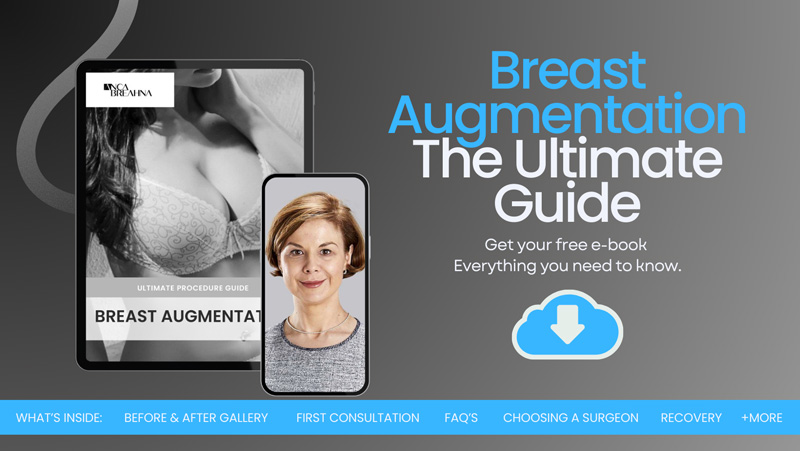
Breast Reduction to Fix Asymmetrical Breasts
Breast reduction surgery is aimed at removing excess breast tissue, fat, and skin to reduce the size of overly large breasts and achieve symmetry. This procedure can also alleviate physical discomfort such as back and neck pain associated with large breasts. Similar to augmentation, the surgery involves general anaesthesia and a recovery period, with you returning to normal activities within a few weeks.
The outcome of breast reduction is not only a more balanced breast size but also improved comfort and freedom in physical activities and clothing choices. Scarring is a consideration, but Anca strives to minimise and strategically place incisions to reduce visible marks.
Is Breast Reduction Right for You?
Deciding to undergo breast reduction surgery involves considering various factors, including physical discomfort, the desire for a more proportionate figure, and the impact of large breasts on your daily activities and lifestyle. If you experience back, neck, or shoulder pain, skin irritation beneath the breast crease, or find physical activity restricted due to the size of your breasts, reduction surgery might offer significant relief and improve your quality of life.
Download Anca’s Breast Reduction Guide
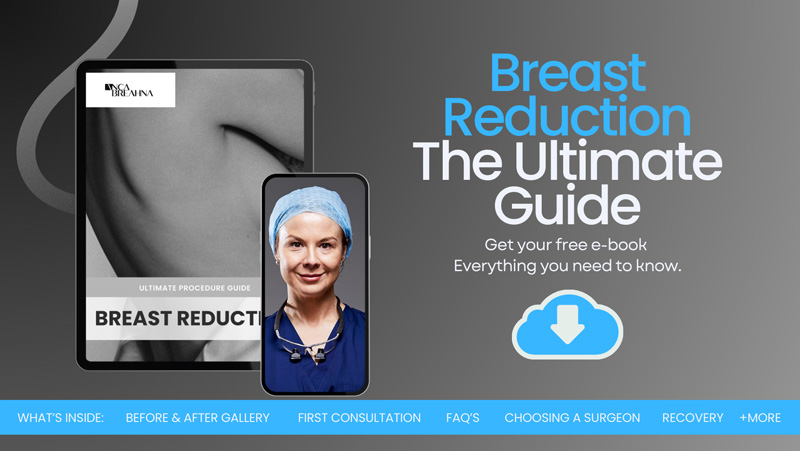
Breast Uplift for Lopsided Breasts
A breast uplift, or mastopexy, addresses sagging and uneven breasts by removing excess skin and tightening the surrounding tissue to reshape and raise the breasts. This procedure can be performed alone or in conjunction with augmentation or reduction to achieve the desired symmetry and shape. The recovery process and considerations are similar to those of the other surgical options, with the added benefit of rejuvenating the breast’s profile without significantly altering its size.
Download Anca’s Breast Uplift Guide
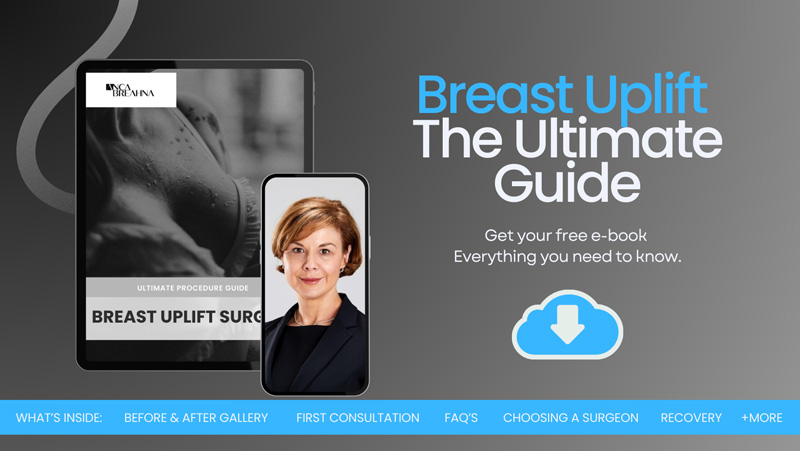
Fat Transfer to the Breasts to Correct Asymmetry
Fat transfer to the breasts, also known as autologous fat transfer or fat grafting, has become a popular option for correcting breast asymmetry, offering a more natural alternative to implants. This procedure involves harvesting fat from other parts of your body—commonly the abdomen, thighs, or buttocks—through liposuction, processing it, and then injecting it into the breasts to improve shape, size, and symmetry. Ideal for patients seeking a modest increase in breast size and a natural look and feel, fat transfer can correct asymmetry caused by congenital conditions, previous surgeries, or developmental issues, enhancing the breasts’ overall appearance without the need for synthetic materials.
The procedure’s appeal largely lies in its dual benefits: contouring areas where fat is removed while enhancing breast size and symmetry using your own tissue. This reduces the risk of allergic reactions and rejection by the body. Additionally, fat transfer to the breasts can achieve subtle yet effective results, making it an excellent option for those looking for minor adjustments or who prefer to avoid the more dramatic look associated with implants. Recovery time is shorter than traditional breast augmentation surgery, and since the procedure uses minimally invasive techniques, scarring is minimal. However, it’s important for you to have realistic expectations and understand that some of the injected fat may be reabsorbed by the body over time, potentially necessitating additional procedures to maintain the desired outcome.
You should have sufficient fat reserves for harvesting. The procedure is most successful in women looking for a natural correction of asymmetry rather than a significant increase in breast size.
When considering surgical treatments for breast asymmetry, it’s essential to have realistic expectations and understand that perfection is not the goal, but rather improvement and balance. A detailed consultation with Anca will provide you with all the necessary information, including potential risks, recovery details, and the expected outcomes tailored to your situation.
FAQs about How to Fix Asymmetrical Breasts or Lopsided Breasts – Treatment Options
Can exercises specifically target and correct breast asymmetry?
- Exercises can strengthen chest muscles and improve posture, potentially enhancing the appearance of your breasts. However, they cannot directly alter breast size, shape, or symmetry. For noticeable asymmetry corrections, other treatments may be more effective.
Are there any non-invasive treatments that provide permanent results for breast asymmetry?
- Most non-invasive treatments, such as the use of specialised bras or inserts, offer temporary solutions. Minimally invasive options like fat transfer injections provide more lasting results but may require multiple sessions and can vary in permanence. Surgical options tend to offer more permanent solutions for asymmetry.
How do I choose between a breast lift and augmentation to correct asymmetry?
- The choice between a breast lift and augmentation depends on your specific needs and goals. If your primary concern is sagging and you’re satisfied with your breast volume, a lift might be ideal. If you’re looking to increase size or fullness, augmentation could be the better option. A consultation with Anca can help determine which procedure, or combination thereof, suits your situation best.
What are the risks associated with surgical treatments for breast asymmetry?
- As with any surgery, there are risks, including infection, scarring, changes in nipple or breast sensation, and dissatisfaction with the results. Specific risks can vary depending on the procedure chosen and individual health factors. Discussing these risks with your surgeon before proceeding is crucial.
How long do the results of surgical treatments for breast asymmetry last?
- Surgical corrections for breast asymmetry, such as augmentation, reduction, or lift, can offer long-lasting results. However, factors like aging, weight fluctuations, and hormonal changes can affect the longevity of the outcomes. Regular follow-ups with your surgeon and maintaining a stable weight can help preserve the results.
Further Reading about Breast Augmentation with Consultant Plastic Surgeon Anca Breahna
- Read more about Plastic Surgery for Women in UK
- Read more about All about Perfect Breasts and How to Get Them
- Read more about Top 10 Benefits of Wearing a Compression Garment after Breast Implant Surgery
- Read more about What Do Breast Uplift Scars Look Like and How Can They Be Faded
- Read more about Recovery Timeline after Breast Uplift (Mastopexy) Surgery
- Read more about How to Fix Inverted Nipples
- Read more about What are Tuberous Breasts and How to Correct Them
- Read more about Breast Asymmetry Surgery – How I Do It
Medical References about Asymmetrical Breasts or Lopsided Breasts
- Is breast asymmetry linked to breast cancer? – Medical News Today
- Breast asymmetry and predisposition to breast cancer – PubMed
- Breast Asymmetry: Classification and Management – Oxford Academic
- Breast asymmetry and phenotypic quality in women – Science Direct
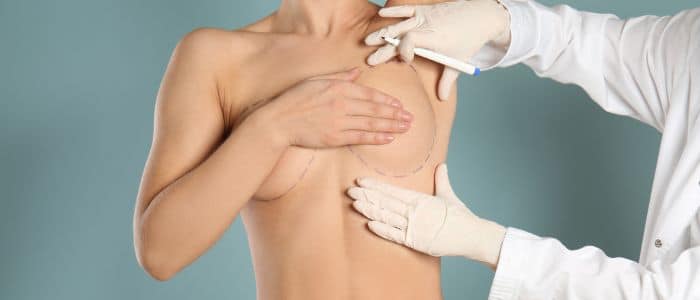

 Ms Anca Breahna, PhD, MSc, FEBOPRAS, FRCS (Plast) is a highly regarded Consultant Plastic Surgeon specialising in the field of Aesthetic and Reconstructive Plastic Surgery. Anca performs a range of
Ms Anca Breahna, PhD, MSc, FEBOPRAS, FRCS (Plast) is a highly regarded Consultant Plastic Surgeon specialising in the field of Aesthetic and Reconstructive Plastic Surgery. Anca performs a range of 